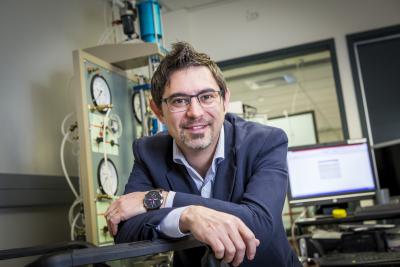These will be sustainable and cost-effective seismic-isolation foundation-soil systems for medium-density low-rise buildings, according to the project’s Science Leader, UC College of Engineering Senior Lecturer Gabriele Chiaro, of the Civil and Natural Resources Engineering department.“Successful completion of this research will result in a sustainable engineering solution to increase the seismic resilience of low-rise buildings while reusing and recycling waste tyres with great environmental and socio-economic benefits for the country, such as new jobs, improved products, and increased revenues for New Zealand, and hopefully the world,” Dr Chiaro says.Annually in Aotearoa New Zealand over 3.5 million used tyres are destined for landfills, illegally disposed or unaccounted for, he says, giving rise to stockpiles of tyres that do not readily degrade and disintegrate. With the ever-growing volume of waste tyres, environmental concerns have urged the search for reuse of waste tyres through large-scale recycling engineering applications.“Waste tyres are a great source of environmentally friendly and sustainable building materials that can be made affordable and readily available through technological innovations,” Dr Chiaro says.“Also, they may provide novel and effective engineering solutions to enable us to design buildings with enhanced seismic resilience. This makes them ideal materials for developing affordable, medium-density, low-rise buildings that are in high demand in New Zealand.”In this context, by reusing and recycling waste tyres, Dr Chiaro and his research team propose to deliver an innovative eco-rubber, seismic-isolation foundation system to enhance the seismic performance of medium-density low-rise buildings across NZ.This will be achieved by combining two critical elements:· a seismic-dissipative filter made of rubber-gravel mixtures placed underneath the foundation structure, and· a flexible raft foundation made of steel fibre-reinforced rubberised concrete.
To achieve their goal the UC researchers will use a combination of:· geotechnical and environmental engineering investigations to identify optimum rubber-gravel mixtures, having excellent mechanical properties and minimal leaching attributes,· structural engineering tests to design flexible, fibre-reinforced, rubberised-concrete raft foundations with satisfactory structural performance, and· numerical and physical models to prove the concept, evaluate the seismic performance of the entire foundation system, and quantify the level of reduction in the seismic response of prototype buildings.
“Successful completion of this research will result in a sustainable engineering solution to increase the seismic resilience of low-rise buildings while reusing and recycling waste tyres with great environmental and socio-economic benefits for the country, such as new jobs, improved products, and increased revenues for New Zealand, and hopefully the world,” Dr Chiaro says. The Endeavour Fund, New Zealand’s largest contestable research fund, invests in ambitious research projects that aim to improve the lives of New Zealanders by enhancing New Zealand’s economy, environment and society.




